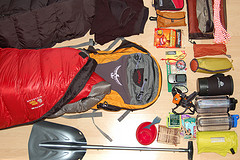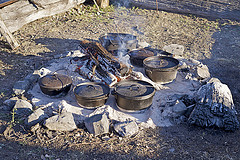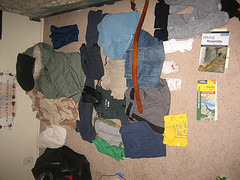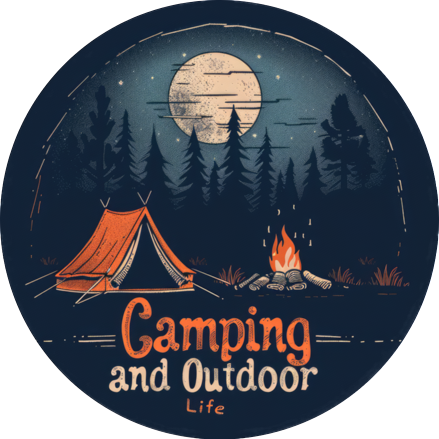Camping provides opportunities for solitude, family fun or a romantic getaway. Whatever type of experience you seek, having adequate camping gear is essential. Proper planning can result in an enjoyable and safe trip. Here are the essential items you will want to include on your packing list.
Sleeping Gear
If you are going camping, that means at least one night will be spent sleeping outdoors. One of the biggest challenges is staying comfortable through the night. Cold air, moisture or a bumpy surface can make sleeping difficult. If you toss and turn all night, you are likely to feel fatigued the following day and don’t have the right camping gear. This not only makes camping less enjoyable; it also can cause you to make poor decisions, which can be dangerous.
First of all, figure out whether you are going to be sleeping outside, under the stars; inside a camper, van or other vehicle; or in a tent. Rolling out your bedroll on the ground, without shelter, can be a wonderful experience in the right conditions. Make sure you know the weather forecast and keep an eye on the sky. You probably understand that temperatures are lower at high elevations. It is also vital to know that cold air settles in valleys and canyon bottoms at night. So, the warmest place to camp may be somewhere between an area’s lowest and highest points.
If you choose to sleep in a tent, there are several factors to consider. First of all, buy the right tent by taking into account the number of people who will be using it, your comfort needs and your budget. Tents are available in a variety of sizes, from low-slung pup tents for individuals to lavish multi-room structures for families. Set up the tent at home before your camping trip, to make sure you know how to do it. Unpacking a new tent and trying to figure it out in camp can be stressful, especially in inclement weather.

If your tent does not come with seam sealer, buy a bottle. Applying this substance will help keep moisture from seeping into the tent. It’s also a good idea to have a small bar of soap, to rub on the tent’s zippers to keep them in working order.
Beneath the tent, place a plastic tarp or ground cloth. Tuck in the edges, so rain or snow cannot get between the tarp and the bottom of the tent. Digging a narrow, shallow ditch around the outside of a tent can divert water runoff from your bed. For this purpose — as well as for putting out campfires, burying waste and other purposes — pack a shovel. If you expect precipitation, you might want to string a tarp over the tent, using rope or bungee cords connected to surrounding trees.
Get a sleeping bag rated at least 10 degrees below the lowest temperature you expect to encounter. An extra blanket may be used to cover your head, upper torso or feet. Pack a foam or inflatable pad to place beneath the sleeping bag, for insulation and padding. Don’t forget your pillow.
Cooking Gear
The amount of cooking gear you need depends on the types of meals you plan to eat. Many dishes can be prepared in advance, so they do not require being cooked in camp. Sandwiches and precooked dishes are examples of such ready-to-eat food. Fruit, nuts and other snacks also are easy to serve. Packing meals requires some thought and planning. Figure out how many breakfasts, lunches and dinners will be required, based on the duration of your camping trip and the number of people. Food that is likely to spoil quickly should be eaten during the first day or two. Save nonperishable items for subsequent days.

Take plenty of food, because camping entails burning more calories than normal. Pack more water than you think you will need, as you might need to use some for unexpected purposes (like dousing flames escaping from a campfire, or helping a fellow camper who has run out of water). Take iodine pills or a filter so you can drink water from a stream, if necessary.
Get a good cooler that will keep your food cold. You may want to use more than one cooler, to lighten the load and provide easier access to certain items. Instead of buying bagged ice, which can ruin food when it melts, freeze plastic bottles of water before leaving home.
Many types of camp stoves are on the market. Find one that you feel comfortable operating. Test it at home. Make sure you have sufficient fuel, which usually comes in plastic bottles that connect with the stove. Remember to take matches or lighters. An option is cooking over a campfire with a small grill. This can be a little tricky, because the heat is more difficult to regulate. You will need a cooking pot, possibly a skillet or griddle, utensils, bowls and plates, and cups or mugs. Don’t forget the coffee pot.
Clothing
The amount and types of clothing you pack depends upon the conditions you expect to encounter. Winter camping obviously requires more clothes. However, you may have to deal with wide-ranging temperatures, precipitation or wind any time of year. Even seemingly mild locations like deserts can get cold. You can’t stay in your nice, warm sleeping bag all day. You need to make sure you are able to stay comfortable during the evenings and early mornings, when you are outside, shivering next to the campfire.
You could experience hot afternoons and cold nights, so plan accordingly. Experts recommend three layers of clothing to keep you dry and warm. Start with waterproof, or at least water-resistant, jacket and pants. You need an outer shell that repels moisture and wind. Insulated tops and bottoms are even better.
Your middle layer of clothing is crucial for keeping warm. Some of the best materials are fleece, goose down and wool. Thinsulate and other synthetic fibers also work well. For the inner layer, wear synthetic underwear and socks that do not absorb moisture. This is essential to avoiding discomfort and hypothermia. Cotton long-johns and blue jeans quickly become soaked and retain the moisture.

Extra socks are a good idea to keep your feet dry and warm. Change into a dry pair before going to bed, because you will probably sweat in the socks you wear during the day. If your shoes or boots are not waterproof, or you have to walk through water, take gaiters. You will want comfortable shoes or sandals to wear in camp. Pack a lightweight raincoat with a hood. Take gloves and at least one hat. Shorts, swimsuits and other types of clothing also may be appropriate, depending on your camping destination and the climate.
Other Camping Gear
You will want to pack a flashlight (with extra batteries), possibly a lantern (with fuel), and personal items like toothbrushes and medication. Consider a compass and reflecting mirror if you are camping in a remote location or plan to do some hiking. Think about what you are going to be doing all day in camp, and the items you will need. Get a comfortable chair, preferably one that folds for easy packing. Make sure it is sufficient for your size and weight. An alternative is a sleeping pad that has straps which allow the pad to be used as a seat. Take books, games or other items that will help you pass the time. You might want to have guide books to identify birds, plants and other things in nature.
Conclusion
It is easy to pack too much or too little. Knowing where you are going, and how long you plan to be there, will help you decide what to take. Resist the urge to throw into the car everything you can imagine needing. Excess gear not only takes up space; it also adds to the chore of packing and unpacking.
Have a mechanic check the vehicle to ensure it is in good shape. Fill the gas tank and take extra oil. Make sure you have maps to help you find your destination. When it is finally time to head out, you can enjoy the satisfaction of knowing you are carrying all the camping gear you are likely to need in camp.







[…] Camping Gear for car camping […]